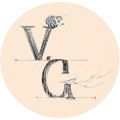Table of Contents
Modern Art refers to a wide range of artworks created between the end of the 19th century and the middle of the 20th century. The beginning of Modern Art was marked by radical changes in the art world, especially the emergence of new art movements such as Impressionism, Expressionism, Cubism and Futurism.
Impressionism
Impressionism was one of the first modern art movements that emerged in France in the late 19th century. The Impressionists painted mainly landscapes and everyday scenes and focused on capturing light and atmosphere. Well-known impressionists include Claude Monet, Edgar Degas, and Pierre-Auguste Renoir.
Post-Impressionism
Post-Impressionism developed in the late 1880s as a reaction to Impressionism. Post-Impressionists, such as Vincent van Gogh and Paul Cézanne, experimented with shapes, colors, and techniques, creating unique works of art that stood out from traditional works of art.
Expressionism
Expressionism emerged in the early 20th century as a reaction to the impression of modern life. Artists focused on depicting emotions and inner experiences in their works. Well-known expressionists include Edvard Munch, Wassily Kandinsky, and Franz Marc.
Cubism
Cubism was one of the most influential modern art movements of the 20th century, originating in France. Cubists, such as Pablo Picasso and Georges Braque, broke down forms into geometric patterns, creating an entirely new kind of visual language.
Futurism
Futurism was an Italian movement that focused on the depiction of movement and speed. Artists like Umberto Boccioni and Carlo Carrà often painted scenes of urban life to capture the excitement of the modern world.
Dadaism
Dadaism was a movement that emerged during World War I and focused on rejecting convention and creating art that was intentionally senseless. Marcel Duchamp was one of the most famous Dadaists.
Surrealism
Surrealism emerged in the 1920s and focused on the depiction of dream worlds and the subconscious. Artists such as Salvador Dalí and René Magritte often created bizarre and eerie images that transported the viewer into a surreal world.
Abstract Expressionism
Abstract Expressionism emerged in the 1940s in the United States and was a response to the events of World War II. Artists such as Jackson Pollock and Willem de Kooning created abstract artworks that were often large in scale.
Artvrenisworld
The style Artvrenisworld of the artist Verena Glock from Bern wants people to associate joy, motivation and a positive attitude towards life with her works of art again. Art should bring joy again, inspire after a hard day at work or contribute to relaxation. For this reason, the pictures and drawings are colorful, sometimes funny in connection with animals or represent well-known works of art or art styles positively.


